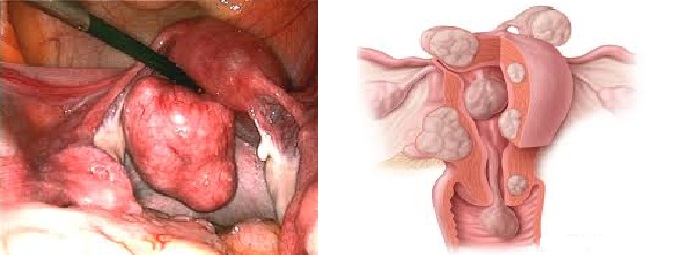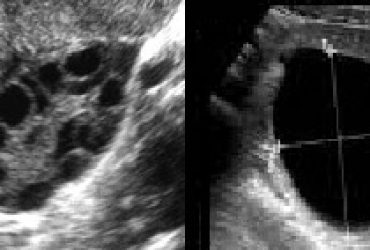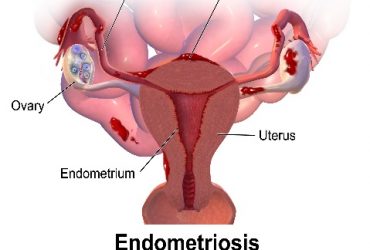Definition
Fibroids are benign tumors growing from the muscle cells of the womb under the effect of the female hormone Estrogen. That is why a fibroid never appears before menarche and it decreases in size after menopause. This is a benign tumor, which means it grows slowly, does not spread to other organs, and does not cause deterioration of women’s health.
Incidence and prevalence of fibroids
Such tumors are common, they are seen in 5-10% of women. Most cases are asymptomatic i.e., they cause no symptoms and are usually discovered accidentally during gynecologic consultation. The chance of having a fibroid is higher if your mother or sister have a fibroid, or if you are in your forties, if you suffer from prolonged infertility, irregular periods, or long history of poor ovulation such as among cases of polycystic ovary syndrome (PCOS).
Types of fibroids according to where the tumor is growing
Fibroids differ in size and rate of growth. Some are tiny while others may reach huge sizes of >20 cm in diameter. Some women present with only one fibroid while others may have numerous fibroids of different sizes growing in the womb.
Most fibroids grow within the anatomical limits of the womb’s muscle layer, but about one third of fibroids may grow on the outer surface of the womb (extramural/subserous) or the inside its cavity (intracavitary/submucous). Occasionally, the later may become pedunculated in the form of a polyp which may sometimes protrude through the neck of the womb into the vagina.
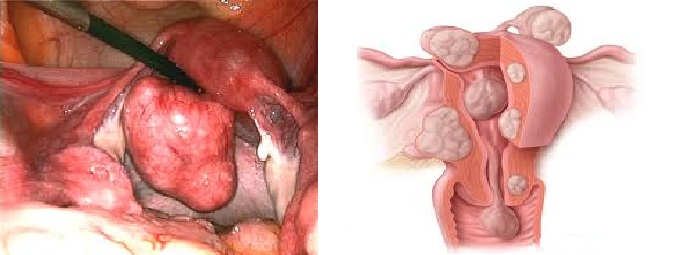
Clinical effects of fibroids
As we have previously mentioned, most (75%) fibroids are asymptomatic, but in the remaining cases, fibroids may cause heavy yet still regular periods, or dull aching poorly defined period pain due to pelvic venous congestion, or pain during sexual intercourse (dyspareunia). Fibroids may cause infertility or delayed conception if they encroach on the Fallopian tubes or into the womb cavity. They may also cause miscarriage or preterm labor or may obstruct the birth canal and impede vaginal delivery. They are associated with higher rates of bleeding during pregnancy due to placental separation (abruption) or after delivery (atonic postpartum hemorrhage).
Diagnosing a fibroid
Most cases are diagnosed easily during a gynecologic ultrasound scan due to their characteristic shape. But occasionally, some cases may need an X-ray with contrast as a dye test to diagnose pressure on the ureter or Fallopian tubes.
Treatment
In many cases, no treatment is needed except for follow-up to monitor the size of the fibroid. Many other cases may benefit from a medical treatment to control the amount of menstrual bleeding or to control the degree of pain during periods. Symptomatic treatment in the form of Tranexamic acid (Cyclokapron), iron supplantation and pain killers may be all what the lady needs. Some cases may be controlled by hormonal treatment such as oral contraceptive pills or hormonal intrauterine device (hormonal loop).
Other more severe cases need surgical treatment which sometimes may be done through key-hole surgery (laparoscopy). Or occasionally, surgery may be avoided especially in perimenopausal cases by giving medicines which cause temporary artificial menopause for few months waiting for the natural menopause.
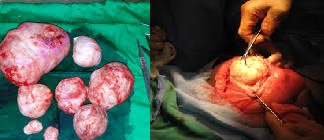
Other cases especially those with severe symptoms who have completed their family may be better treated by hysterectomy whether this is done by standard surgery or laparoscopy.
We may soon start seeing the use of the therapeutic catheter which may be used to block the feeding blood vessel of the tumor to cause it to shrink.
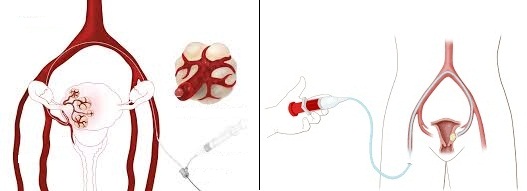
This is an efficient choice of treatment may not benefit in cases who still want a future pregnancy a sit may affect the blood flow reaching the ovary.
Best Wishes for Health
and Happiness


